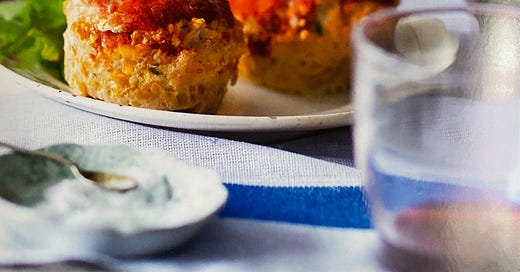If you have ever been horrified at the skimpy amount of food that is an official serving size on a food label, you are not alone. I’ve been seeing lots of comments about it on social media lately. Here are just a few recently posted on Threads:
“I just weighed servings of pecans to put in little baggies as snacks and was bitter the whole time” @izzynelle
“Who actually follows the serving size amount on the pasta box?! 2 oz…. Come on!” @orsararecipes
“Why do ready to eat soups have the serving size being half a can? Who out here only eating half a can of soup?” @allycat1987
Here’s the thing ---the serving size listed on the package is not necessarily the amount that is right for you at a given meal or snack, and it’s not meant to be. Once you understand the difference between a serving and a portion you’ll see why you can stop stressing about the numbers.
Thanks for reading Ellie’s Real Good Food! This issue is for paid subscribers with a sneak peek for free subscribers. I hope you will consider upgrading to paid to get the full archive of articles, exclusive recipes, and more.
I appreciate your support of this work — free or paid, I’m glad you are here!
What’s a Serving?
On a package label, a food’s serving size is a standardized amount that is supposed to reflect how much of the food people typically eat at one time. In 2016 the FDA updated the rules to make serving sizes more realistic. For example, they upped the serving size of ice cream from ½ cup to 2/3 cup, and they made a 12 to 20-ounce bottle of soda one serving since people tend to drink a whole bottle that size.
Besides being a key component of food labels, standardized serving sizes also help us communicate about nutrition. When I recommend 5 servings a day of fruits and vegetables, for example, that number is based on one serving being 1 cup raw or cooked vegetables, or 1 medium fruit. The serving size is standardized so we are all on the same page talking about these things. It doesn’t mean you are only supposed to have 1 cup of vegetables on your plate at dinner.
Establishing an official serving size is also necessary for doing a nutritional breakdown for a recipe. The serving sizes for my recipes are based on what an average, moderately active person would likely be satisfied with. Although a range of servings per batch would be more accurate, I have to pick one number in order to do the nutrition analysis.
As you can see, a serving size is really just a way of standardizing an amount, so we can understand and compare different foods— it does not tell you how much is right for you at a given meal or snack.
Serving vs. Portion
The amount you choose to eat at a given meal or snack is your portion, and it may be equal to, or more, or less than, an official serving. The portion that is right for you depends on a gazillion and one things and can vary day to day.
If you are training for a marathon the right portion of pasta for you might be double or triple the standard serving size. If you had a big lunch and don’t have much of an appetite for dinner it could be half the standard serving size.
What’s the Optimal Portion for You?
Keep reading with a 7-day free trial
Subscribe to Ellie's Real Good Food to keep reading this post and get 7 days of free access to the full post archives.



